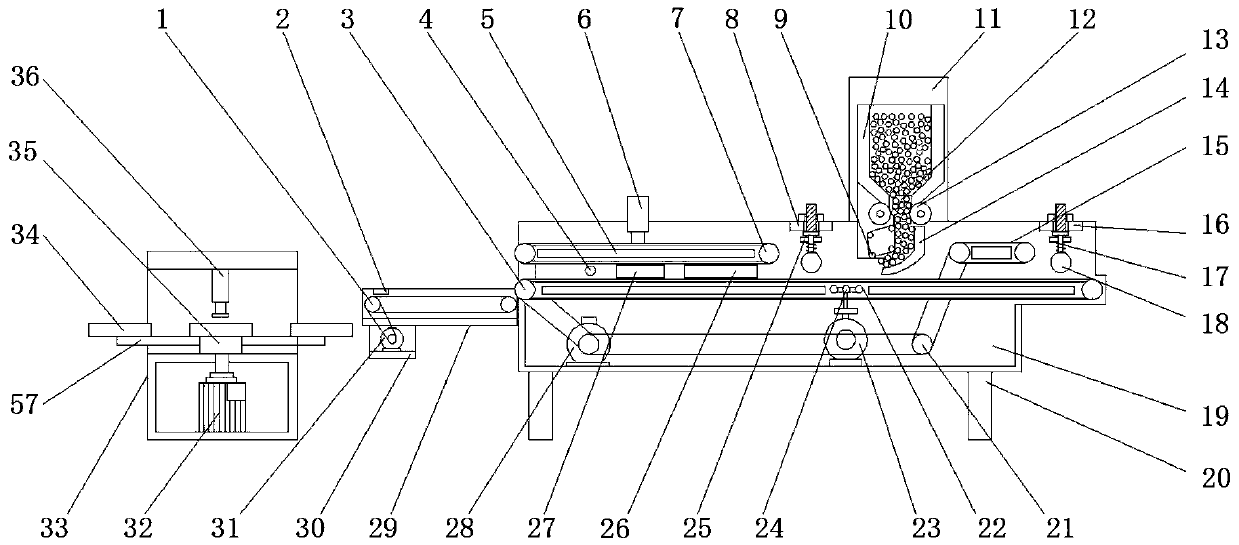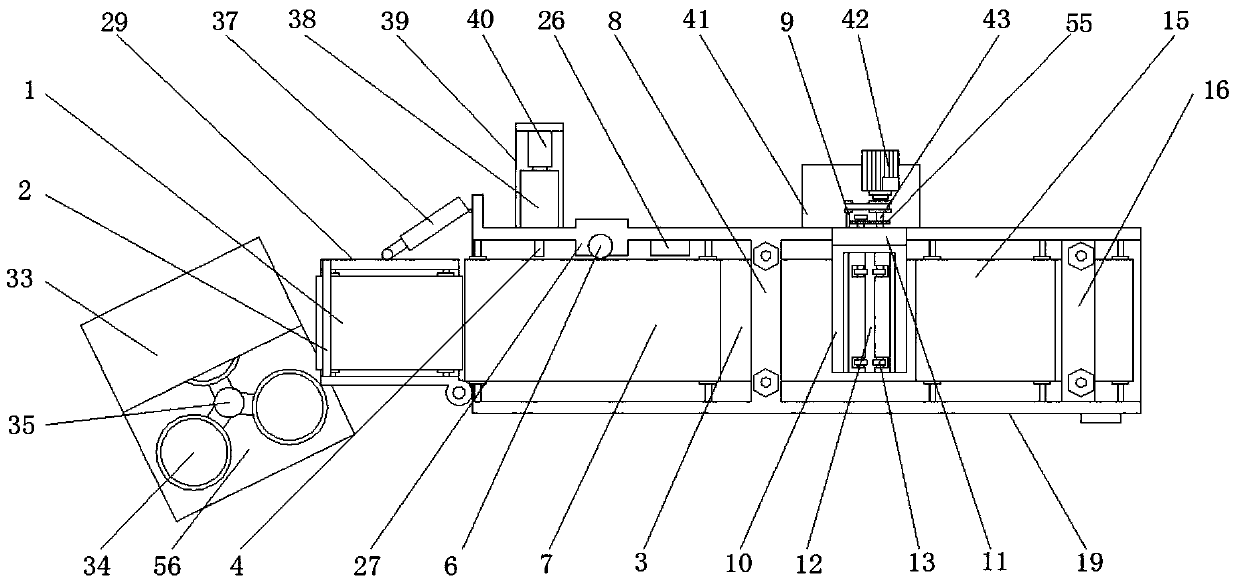Casting-pressing process production line for road-sweeping brush plate with plastic inner ring
A production line and casting technology, which is applied in the field of plastic inner ring sweeping brush casting production line, can solve the problems of resource waste, brush wire bifurcation, low work efficiency, etc., and achieve the improvement of production quality, uniform feeding and saving human effect
- Summary
- Abstract
- Description
- Claims
- Application Information
AI Technical Summary
Problems solved by technology
Method used
Image
Examples
Embodiment Construction
[0026] The following will clearly and completely describe the technical solutions in the embodiments of the present invention with reference to the accompanying drawings in the embodiments of the present invention. Obviously, the described embodiments are only some, not all, embodiments of the present invention. Based on the embodiments of the present invention, all other embodiments obtained by persons of ordinary skill in the art without making creative efforts belong to the protection scope of the present invention.
[0027] see Figure 1-7, an embodiment provided by the present invention: a plastic inner ring sweeping brush piece casting process production line, including a guide conveyor belt 1, a main conveyor belt 3, a first extrusion conveyor belt 7, a second extrusion conveyor belt 15, and a mounting seat 19 And the casting seat 33, the four corners of the bottom of the mounting seat 19 are fixed with support columns 20, the inner side of the mounting seat 19 is equip...
PUM
 Login to View More
Login to View More Abstract
Description
Claims
Application Information
 Login to View More
Login to View More - R&D
- Intellectual Property
- Life Sciences
- Materials
- Tech Scout
- Unparalleled Data Quality
- Higher Quality Content
- 60% Fewer Hallucinations
Browse by: Latest US Patents, China's latest patents, Technical Efficacy Thesaurus, Application Domain, Technology Topic, Popular Technical Reports.
© 2025 PatSnap. All rights reserved.Legal|Privacy policy|Modern Slavery Act Transparency Statement|Sitemap|About US| Contact US: help@patsnap.com



